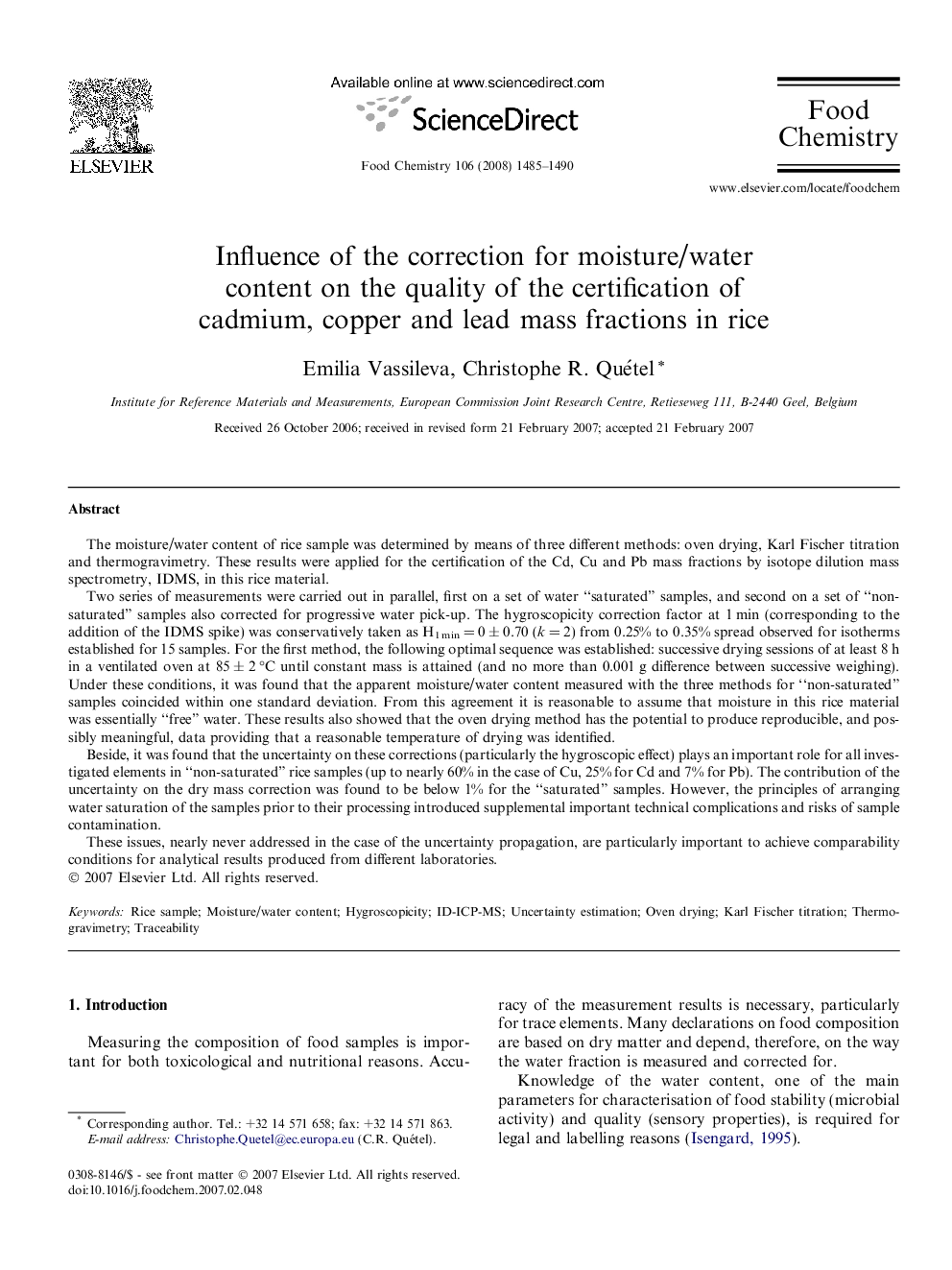| Article ID | Journal | Published Year | Pages | File Type |
|---|---|---|---|---|
| 1187444 | Food Chemistry | 2008 | 6 Pages |
The moisture/water content of rice sample was determined by means of three different methods: oven drying, Karl Fischer titration and thermogravimetry. These results were applied for the certification of the Cd, Cu and Pb mass fractions by isotope dilution mass spectrometry, IDMS, in this rice material.Two series of measurements were carried out in parallel, first on a set of water “saturated” samples, and second on a set of “non-saturated” samples also corrected for progressive water pick-up. The hygroscopicity correction factor at 1 min (corresponding to the addition of the IDMS spike) was conservatively taken as H1 min = 0 ± 0.70 (k = 2) from 0.25% to 0.35% spread observed for isotherms established for 15 samples. For the first method, the following optimal sequence was established: successive drying sessions of at least 8 h in a ventilated oven at 85 ± 2 °C until constant mass is attained (and no more than 0.001 g difference between successive weighing). Under these conditions, it was found that the apparent moisture/water content measured with the three methods for “non-saturated” samples coincided within one standard deviation. From this agreement it is reasonable to assume that moisture in this rice material was essentially “free” water. These results also showed that the oven drying method has the potential to produce reproducible, and possibly meaningful, data providing that a reasonable temperature of drying was identified.Beside, it was found that the uncertainty on these corrections (particularly the hygroscopic effect) plays an important role for all investigated elements in “non-saturated” rice samples (up to nearly 60% in the case of Cu, 25% for Cd and 7% for Pb). The contribution of the uncertainty on the dry mass correction was found to be below 1% for the “saturated” samples. However, the principles of arranging water saturation of the samples prior to their processing introduced supplemental important technical complications and risks of sample contamination.These issues, nearly never addressed in the case of the uncertainty propagation, are particularly important to achieve comparability conditions for analytical results produced from different laboratories.
